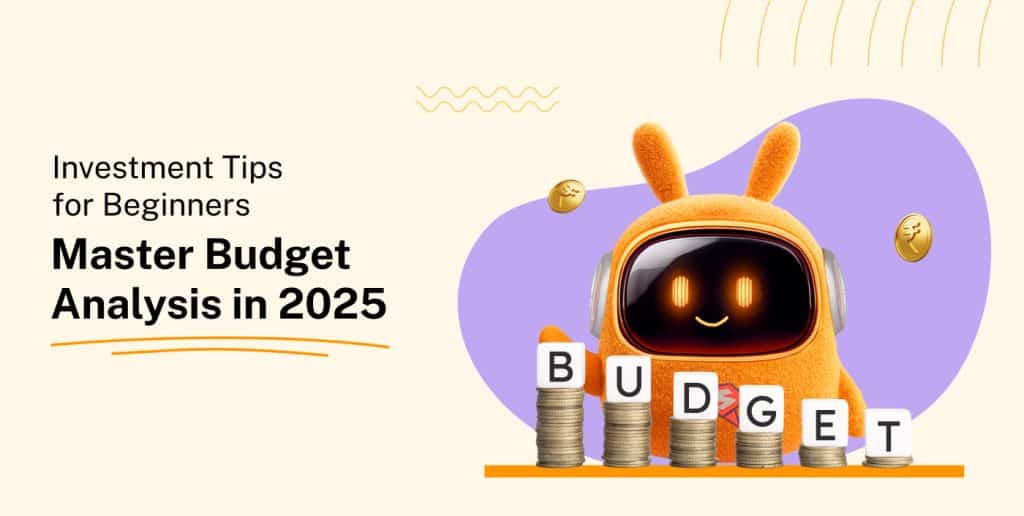
Understanding this sobering reality marks the beginning of smart investing: a ₹1,00,000 expense today will balloon to ₹3,86,000 in 20 years with 7% inflation. Your hard-earned money slips away without a proper budget.
People often miss how a modest investment habit can build substantial wealth. Making investments becomes second nature once you add them to your monthly budget. This basic money management principle builds the groundwork for your financial future.
Starting with just ₹500 as a monthly SIP works well. To cite an instance, an original $5,000 investment earning 12% yearly grows to $15,500 in 10 years without extra deposits. A Systematic Investment Plan lets you accumulate significant wealth steadily.
The 50/30/20 rule makes budgeting simple: needs get 50% of your income, wants take 30%, and savings and investments receive 20%. But successful businesses review their budgets monthly, quarterly, or yearly – and your personal finances deserve the same attention.
Start with a clear financial goal
Clear financial goals give your investments purpose and direction. You wouldn’t drive without knowing your destination—you’d waste gas and end up nowhere.
Financial goals naturally fit into three categories based on timing. Short-term goals span less than 3 years—like building emergency funds or saving for vacations. A home down payment belongs to medium-term goals that take 3-10 years. Retirement planning and building generational wealth fall under long-term goals that stretch beyond 10 years.
Your investment approach depends heavily on your timeline. Risk tolerance increases with longer time horizons. Short-term goals need stable options like savings accounts or money market funds. A mix of stocks and bonds works best for medium-term goals. Stock-heavy portfolios suit long-term goals because they can weather market volatility.
Each major goal deserves its own account to track progress. This strategy lets you match investments to specific timelines and measure success for each goal independently.
Beginners can use tools like Stoxo to see how different investment strategies match their goals. These tools make investing less daunting and more meaningful.
Clear financial targets turn vague investment activities into a purposeful experience with measurable wins.
Build a budget before you invest
Smart spending habits should be your foundation before you start investing. A detailed budget shows exactly where your money goes and how you could use it better.
The 50/30/20 rule deserves a closer look. Your needs take up 50% – think housing, utilities, groceries, and minimum debt payments. The next 30% goes to wants like entertainment and dining out. The remaining 20% should build your savings and help pay off extra debt.
Your emergency fund needs to come first. You should save enough to cover 3-6 months of expenses in a separate, readily available account. This money protects you from unexpected costs like medical bills or car repairs, so you won’t touch your investments when things go wrong.
High-interest debts need your attention before you invest substantially. Credit card debt with 16-24% interest rates will wipe out any reasonable returns from your investments.
The 50/30/20 rule isn’t your only option for budgeting. Zero-based budgeting assigns a purpose to every dollar, while the envelope system helps track cash spending.
Stoxo helps new investors see their spending patterns clearly and spots opportunities to free up more money for investments.
Smart investing habits for beginners
After setting financial goals and creating a budget, you should make smart investing habits your next priority. You need to understand your risk tolerance – your comfort level with potential losses in exchange for gains. As you age, your risk tolerance typically decreases, and your focus changes from growth to income-focused investments.
Your primary defense against market volatility is diversification. Smart investors spread their investments in different asset classes (stocks, bonds, cash), sectors, and geographical regions. This strategy protects your portfolio from devastating losses during market downturns.
You should rebalance your portfolio every six to twelve months. Market movements naturally change your asset percentages over time and might increase your risk exposure beyond comfortable levels.
Successful investors use dollar-cost averaging – they invest fixed amounts whatever the market conditions. This disciplined strategy takes emotion out of investment decisions and can lower your average cost per unit.
The time you spend in the market matters more than trying to time it perfectly. Investors who try to predict perfect buying or selling moments often miss great opportunities.
Beginners can use tools like Stoxo to see their portfolio allocation and automate rebalancing strategies. These tools make good investing habits easier to maintain. Consistent practices will give you better results than chasing quick returns or following market trends.
Conclusion
Your budget analysis skills will build the foundation to start your investment trip. You can’t grow your money if you don’t know where it goes. Of course, financial success starts with clear goals – from saving up for a vacation in two years to planning decades ahead for retirement.
The 50/30/20 budgeting rule gives your finances the structure they need. This method will give you a way to handle today’s needs and build for tomorrow. Setting up an emergency fund before you dive into serious investing helps protect your long-term assets when life throws surprises your way.
Smart investing habits pave your path to building wealth once these basics are in place. Without doubt, you’ll do better by understanding your risk tolerance, broadening across asset classes, and using dollar-cost averaging than by chasing market trends. These principles work in any market condition.
Note that investing success takes time. Patience and consistency bring better results than trying to time the market perfectly. Stoxo can make this trip easier by showing your spending patterns, tracking your goals, and handling rebalancing automatically.
Your financial future depends on the habits you build today. Even small investments add up dramatically over time when you make them regularly within a smart budget. Start small if you need to, but take that first step now. Today’s investment knowledge will keep paying off throughout your financial future.
Key Takeaways
Master these fundamental investment principles to build wealth systematically while protecting your financial future through disciplined budget management.
• Set clear financial goals with specific timelines – Short-term (under 3 years), medium-term (3-10 years), and long-term (10+ years) goals determine your investment strategy and risk tolerance.
• Follow the 50/30/20 budgeting rule before investing – Allocate 50% for needs, 30% for wants, and 20% for savings/investments while building a 3-6 month emergency fund first.
• Start small with regular investments using dollar-cost averaging – Even ₹500 monthly SIP can grow significantly; consistency beats timing the market perfectly.
• Diversify across asset classes and rebalance annually – Spread investments across stocks, bonds, and sectors while reviewing your portfolio every 6-12 months to maintain target allocation.
• Pay off high-interest debt before serious investing – Credit card balances with 16-24% interest rates will negate any reasonable investment returns you might earn.
Without proper budgeting, you risk losing money you can’t afford to lose. Remember, at 7% inflation, ₹1,00,000 today becomes ₹3,86,000 in 20 years – making disciplined investing essential for maintaining purchasing power.
FAQs
Start with clear financial goals, create a budget using the 50/30/20 rule, and begin with small, regular investments. Consider diversifying your portfolio across different asset classes and use dollar-cost averaging to reduce the impact of market volatility.
Track your spending habits, allocate 50% of your income for needs, 30% for wants, and 20% for savings and investments. Prioritize building an emergency fund of 3-6 months’ expenses and pay off high-interest debts before investing significantly.
Setting clear financial goals gives purpose to your investments and helps determine your investment strategy. Short-term goals (under 3 years), medium-term goals (3-10 years), and long-term goals (10+ years) each require different approaches and risk tolerances.
It’s recommended to review and rebalance your portfolio every six to twelve months. This helps maintain your intended asset allocation and ensures your investments align with your risk tolerance and financial goals.
For most beginners, making regular small investments through methods like Systematic Investment Plans (SIPs) is often more beneficial. This approach, known as dollar-cost averaging, helps reduce the impact of market volatility and builds the habit of consistent investing.

Leave a Comment